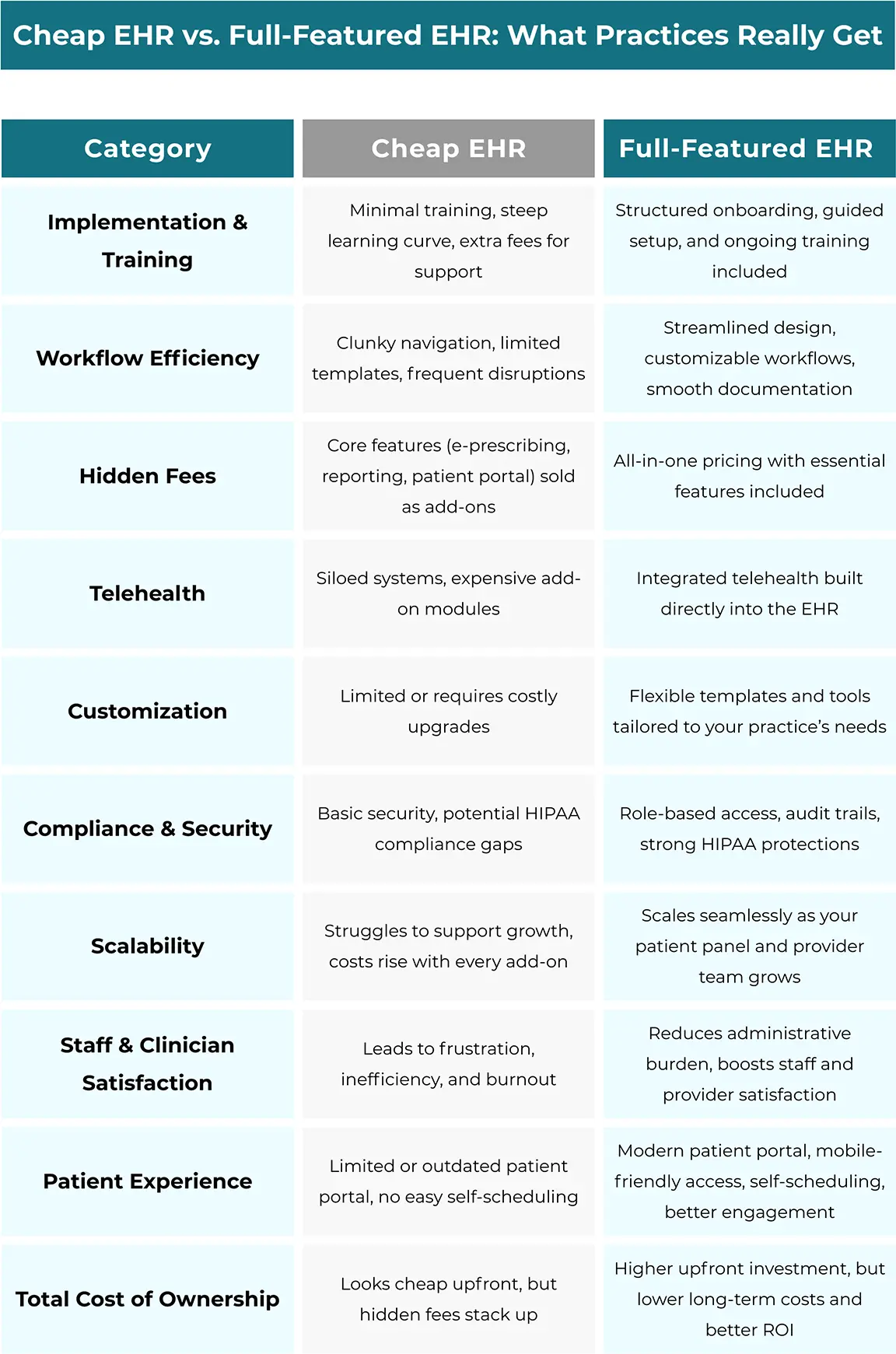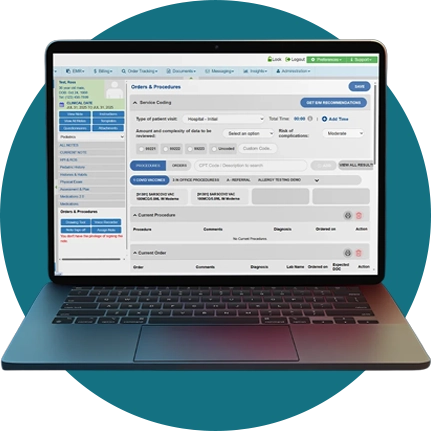Key Takeaways
- When evaluating a Surgery EHR system, it’s critical to look beyond the sticker price.
- The real cost of a cheap EHR shows up in inefficiency, staff burnout, compliance risks, and patient dissatisfaction.
- A robust, scalable EHR might require a higher initial investment, but it pays off by streamlining workflows, improving patient care, and avoiding a cycle of add-ons and hidden fees.
- Discover 5 secrets to an easy Surgery EHR transition.
At first glance, a cheap EHR might seem like the perfect solution for a growing surgical practice. After all, why spend more when you can start with something “affordable”? But many practices soon discover that what looks budget-friendly on paper often leads to frustration, hidden fees, and expensive workflow disruptions.
If you’re weighing options like an affordable EHR for surgery practices or even asking, “is there a free EHR?”, it’s important to understand the full picture of what you’re actually paying for.
Let’s break down the real costs of starting with a system that only appears to save you money.
Table of Contents
The Real Price of Implementation
- Limited training that leaves staff guessing how to use the system efficiently
- Extra hours spent troubleshooting instead of focusing on patients and procedures
- Additional charges for “premium” training sessions or extended support
For surgery practices, this lack of support can create serious inefficiencies whether it’s failing to capture pre-op clearance notes, managing OR scheduling, or tracking post-op recovery. The result? Extended adoption timelines and frustrated staff.
Experienced vendors like Surgery-Cloud address these challenges with free implementation and comprehensive, full-staff training designed for surgical workflows.
Workflow Disruption: The Cost You Don’t See on the Invoice
- Documentation bottlenecks: An affordable EHR may not include templates for pre-op, intra-op, and post-op care, forcing surgeons and staff into time-consuming manual work.
- Inefficient billing workflows: Gaps in revenue cycle management delay reimbursements, especially for bundled surgical billing.
- Staff burnout: Excessive clicks, repetitive data entry, and lack of integration with surgical devices or imaging lead to frustration and turnover.
Every wasted minute navigating poor design is a minute not spent with patients or in the OR.
The Nickel-and-Dime Trap: Add-Ons and Hidden Fees
Many surgical practices start with a low sticker price, only to realize that essential features are locked behind extra fees. Common examples include:
- Advanced reporting or analytics (e.g., surgical outcomes tracking)
- Customization of procedure-specific templates
- Secure messaging or patient portal access
- E-prescribing, especially for controlled substances often prescribed post-surgery
What looked like an affordable EHR for surgery practices can quickly balloon into a system that costs more than premium solutions without delivering the same value.
Telehealth and Siloed Charges
Telehealth is now non-negotiable, even for surgeons, whether for pre-op consults, second opinions, or post-op follow-ups. But with a cheap EHR, telehealth tools are often sold as costly add-ons, or worse, not available at all.
This forces practices into fragmented workflows, juggling separate systems for scheduling, documentation, billing, and telehealth. Not only does this add unnecessary subscription costs, but it also increases compliance risks and reduces efficiency.

How Much Does an EHR Cost, Really?
So, how much does an EHR cost? The answer depends not just on the sticker price, but on the total cost of ownership (TCO):
- Direct costs: Licensing, setup, support, and training
- Indirect costs: Staff productivity losses, missed charges, billing errors, and turnover from burnout
- Growth costs: Paying extra for every new surgeon, feature, or integration your practice needs as it scales
What a Full-Feature EHR Provides From Day One
- Free implementation support – with workflows, templates, and order sets designed for surgery.
- Comprehensive training – so staff and surgeons are confident documenting surgical procedures, coordinating care, and handling complex billing.
- Data migration included – smooth transfer of surgical notes, operative histories, and imaging records.
- Practice-specific customization – templates for common surgical procedures and recovery plans reduce errors and save time.
- Ongoing support at no extra charge – continuous training ensures your team stays efficient as your practice grows.
The difference is clear: instead of being nickel-and-dimed for the basics, you get a partner committed to your surgical practice’s long-term success.
Choosing Wisely: Invest in Long-Term Value
Instead of asking “is there a free EHR?”, ask:
- Will this system scale as my surgery practice grows?
- Does it come with surgery-specific templates and billing tools?
- Are telehealth, patient engagement, and reporting built in or sold separately?
- How much support and training are included?
An inexpensive EHR may look attractive today, but the hidden costs—implementation struggles, workflow disruptions, add-ons, and siloed telehealth charges—can quietly drain your practice’s resources.
Investing in a full-feature surgery EHR built specifically for surgery practices is more about value than cost. The right solution fuels your practice’s growth, improves surgeon satisfaction, and ensures patients get the care they deserve.











